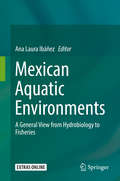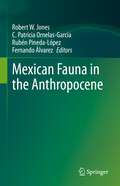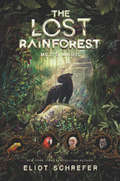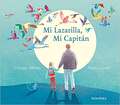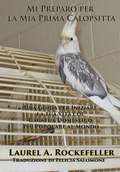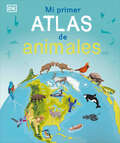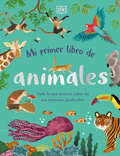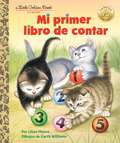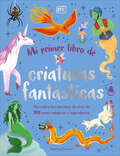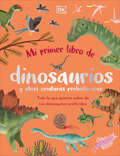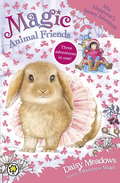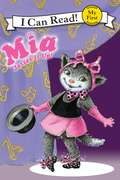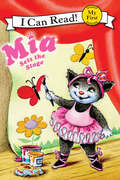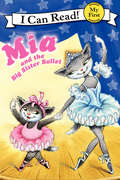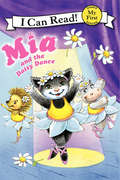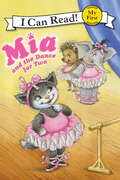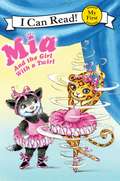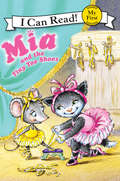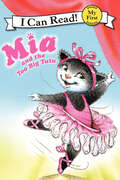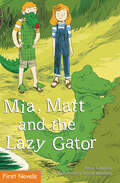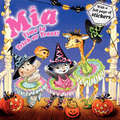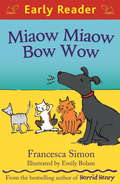- Table View
- List View
Mexican Aquatic Environments: A General View from Hydrobiology to Fisheries
by Ana Laura IbáñezPursuing a multidisciplinary approach, this book highlights current challenges in, and potential solutions to, environmental water management in Mexico. It includes an essential review of current literature and state of the art research, providing a one-stop resource for researchers, graduate students and environmental water managers alike. The result of a cooperation between 35 researchers from seven Mexican academic institutions, two Federal Commissions and one international organization, the book links science to practice for living organisms and their environment, while also addressing anthropogenic effects on our water ecosystems. Particularly the book addresses the following subjects: Biodiversity in inland waters, physical and chemical characterization of inland waters, physico-chemical characterization of Mexican coastal lagoons, microbiota in brackish ecosystems, diversity associated with southern Mexico’s pacific coral reefs, fry fish stockings in aquatic epicontinental systems, a review of tuna fisheries in Mexico, fishery resource management challenges stemming from climate change, aquatic invasive alien species, harmful algal blooms, and aquatic protected areas, related ecological and social problems and the importance for fisheries’ yield.
Mexican Fauna in the Anthropocene
by Robert W. Jones C. Patricia Ornelas-García Rubén Pineda-López Fernando ÁlavarezThis contributed volume presents an analysis of the current conservation status of major faunal groups in Mexico. The chapters describe a prognosis of future challenges, and also explore the expanding threats inherent in the Anthropocene within the context of the unique physical, biological and cultural aspects of the nation. Covering 27 chapters, and written by Mexican and international authors, this book analyzes a wide range of vertebrate and invertebrate animal taxa, their ecosystems and the critical processes related to their present conservation status. This volume is an important reference material for researchers, conservationists and students interested in the biological and ecological processes shaping the Mexican fauna.
Mez's Magic (The Lost Rainforest #1)
by Eliot SchreferThe Lion King meets Wings of Fire in the magical rainforest kingdom of Caldera in this new middle grade animal fantasy series from New York Times bestselling author and National Book Award finalist Eliot Schrefer. Caldera has forever been divided into those animals who walk by night and those who walk by day. Nightwalker panthers, like young Mez and her beloved sister, have always feared daywalkers as creatures of myth and legend. Until the eclipse. Now Mez has discovered that she can cross the Veil and enter the daylight world. Her magical power has unknown depths, but she must rush to discover it after a mysterious stranger arrives at her family’s den, bearing warnings of a reawakened evil. Saving Caldera means Mez must leave her sister behind and unite an unlikely group of animal friends to unravel an ancient mystery and protect their rainforest home.
Mi Lazarilla Mi Capitán
by Gonzalo Moure Maria GirónEmoción y belleza, el profundo amor entre un padre y una hija, y la capacidad para ver más allá de las limitaciones visuales están presentes en este libro. Porque vivir en la oscuridad o tener un campo de visión reducido no tienen por qué impedir el desarrollo de una vida plena que, como en el caso de estos personajes, convierte el trayecto a la escuela en una aventura donde la ciudad se transforma en una selva con bravas criaturas y sonidos fascinantes, o un paso de peatones en el puente sobre un caudaloso río.
Mi Preparo per la Mia Prima Calopsitta
by Laurel A. Rockefeller Felicia SalomoneMi Preparo per la Mia Prima Calopsitta è una guida per te e per i tuoi figli che ti aiuterà a capire come prepararti a portare a casa la tua prima calopsitta. Diversamente dalla maggior parte dei libri sulle calopsitte, questo non cerca di coprire tutto, ma rimane focalizzato su ciò di cui hai bisogno per essere pronto alla tua nuova vita con il tuo uccello. Ricco di storie personali e di foto, imparerai a conoscere com'è la vita con le calopsitte da tutti gli anni che ho vissuto con loro amandoli. Un libro divertente per chi ama gli animali! Gli argomenti trattati includono: -- Calopsitte come cacatua -- Gabbie principali -- Gabbie da trasporto/ospedaliere (comprese le gabbie per i voli nazionali e internazionali) -- Spazi di gioco -- Cibo -- Giocattoli -- Posatoi -- Ciotole per il cibo -- Comunicare con una calopsitta nuova o timida -- Prevenzione della psittacosi (la malattia principale che si trasmette tra umani e uccelli) -- Giochi per giocare con il tuo nuovo uccello
Mi diario sobre las ranas (¡Arriba la Lectura!, Level N #82)
by Margarita González-Jensen Bryan LiedahlAprende sobre el ciclo de vida de las ranas. Tal vez podrías llevar tu propio diario sobre las ranas. NIMAC-sourced textbook
Mi primer atlas de animales (Children's Illustrated Atlas)
by DK¿Dónde viven las jirafas? ¿En qué países hay tigres? ¿Los osos son de clima cálido o frío?Este libro para niños de 6 a 8 años reúne información sobre las características y los lugares que habitan los animales de todo el mundo, desde los osos polares del helado Ártico o los emúes de Australia hasta los tucanes de la selva amazónica y los guepardos de los desiertos africanos. A través de datos divertidos y cifras sorprendentes, los pequeños podrán aprender de manera fácil y amena dónde viven los animales, en qué hábitats se desarrollan y cuál es el clima en cada uno de ellos.En su interior, encontrarás: Un montón de datos divertidos sobre más de 600 animales de todo el mundo y más de 40 mapas a todo color que te indican en qué países se encuentran.Fotografías de calidad de las plantas y los animales más representativos de cada continente.Un manual de los contenidos del libro que explica cómo abordarlos.Juegos que pondrán a prueba lo que aprendieron y un glosario de términos.Cada página está repleta de información de un gran variedad de hábitats, desde altas montañas y áridos desiertos hasta praderas salvajes y selvas tropicales. Además, este libro educativo incluye un mapa desplegable a todo color que muestra cada rincón del mundo. ¡Lleva el reino animal a la pared de tu cuarto y vive una emocionante aventura con los animales del planeta!Bring the amazing animal kingdom right into your home! Packed with fun facts about animals and more than 40 full-color maps that detail the countries where they live.This fabulous educational book for kids zooms-in on countries and continents to show key animal habitats and locations around the world. A thrilling animal adventure around the globe, perfect for kids ages 6–8.Each colorful map in this children's book is bursting with animal facts, combining illustrations with gorgeous photographs that highlight each continent's most iconic animals. From the tallest mountains and desolate deserts to wild grasslands and tropical rain forests; it covers key habitats and locations for each country.Packed with tons of fun facts and figures, the Children's Illustrated Animal Atlas explains where these hidden habitats are found and what the local climate is like. Find descriptions and illustrations of the plants and animals that live in them, making the information easy for kids to comprehend.
Mi primer libro de animales (The Bedtime Book of Animals): Todo lo que quieres saber de tus animales preferidos
by DK* Completamente ilustrado, con una brillante paleta de colores.* Textos sencillos, adecuados para primeros lectores o para compartir en voz alta.* Sorprendentes datos y curiosidades sobre los animales.¡Un precioso libro ilustrado con los animales favoritos de los niños!Un libro imprescindible con textos sencillos para primeros lectores sobre animales de todo el mundo, desde diminutos insectos hasta gigantescos elefantes y ballenas.Mi primer libro de animales explica cada uno de los principales grupos de animales (mamíferos, aves, reptiles, anfibios, peces e invertebrados), la cadena alimenticia, los hábitats y los animales en peligro de extinción.—------------* Fully illustrated, with a bright color palette and fresh feel.* Animals are universally popular.* Brief, basic, and friendly text, to be read by caregivers, but easily understood by all ages.A fully illustrated book, with a bright color palette and fresh feel about animals around the world. It helps to develop early understanding of the natural world, as well as empathy, kindness and care. Brief, basic, and friendly text, to be read by caregivers and easily understood by all ages.
Mi primer libro de contar (Little Golden Book)
by Lilian MoorePor primera vez una edición en español de My First Counting Book, un clásico Little Golden Book. Mi primer libro de contar, la edición en español de My First Counting Book—un entretenido libro para aprender a contar del 1 al 10, con animales magistralmente ilustrados por Garth Williams—, brinda la oportunidad a más de 37 millones de hispanohablantes que residen en Estados Unidos de disfrutar de la maravillosa experiencia de leer este clásico Little Golden Book. Traducido al español por Teresa Mlawer, una de las figuras más respetadas del mudo editorial hispano, este libro es una excelente introducción al mundo de los números, además del regalo ideal para un niño pequeño, y a un precio asequible.An all-new Spanish language translation of the classic Little Golden Book My First Counting Book. This Spanish-language translation of My First Counting Book—a count-to-ten book with breathtaking animal illustrations by Garth Williams—makes the joyful experience of reading this classic Little Golden Book available to the 37 million people in the U.S. who speak Spanish! Newly translated by Teresa Mlawer—one of the most respected figures in Hispanic publishing—this beloved book is a child&’s must-have introduction to numbers, and an ideal baby gift at a great value.
Mi primer libro de criaturas fantásticas (The Bedtime Books)
by Stephen Krensky¡Vete a dormir acompañado de tus criaturas mágicas favoritas!El mundo está lleno de criaturas fascinantes, algunas grandes como elefantes y otras pequeñas como ratones. Desde hadas y sirenas hasta dragones y unicornios, ¡este libro para leer antes de dormir incluye más de 100 criaturas mágicas de todo tipo!Pasa las páginas de este libro para niños y descubre:Mitos, leyendas y cuentos de seres fantásticos acompañados de encantadoras ilustraciones y palabras destacadas para que los niños las aprendan y memoricen.Muchos seres imaginarios y mitológicos organizados por capítulos y en base a su tipología: seres terrestres, acuáticos y voladores.Páginas de referencia al final del libro con información adicional sobre el origen y la historia de cada criatura.Un glosario de términos con el que conocer vocabulario nuevo y una guía de pronunciación para aprender a pronunciar los nombres de las criaturas mágicas.Explora junto a tus hijos la historia de ángeles, brujas, elfos y otras muchas criaturas de culturas de todo el mundo, como Medusa de la mitología griega, el dragón Ninki Nanka de África Occidental o el Abominable Hombre de las Nieves que habita las montañas asiáticas.Un libro lleno de color, de fantasía ¡y muy divertido! Perfecto para leer en voz alta antes de dormir e imprescindible en la estantería de todo curioso lector. ¡Buenas noches!-----------------------------------Say hello to more than 100 of your favorite magical creatures with this colorful bedtime book. This is the must-have bedtime book about the world's most fantastical creatures. Turn each page to learn more about the fantastic variety of magical creatures - from fairies and mermaids to dragons and unicorns.With charming illustrations, storybook text, and key terms highlighted on each page, this book is a wonderful introduction to magical creatures. The book showcases land, water, and air beings in three chapters. Many pages are devoted to a particular creature, with others featuring a collection of similar beings, such as witches and genies, giving bite-sized chunks of accessible information to help early learners learn more about their favorite creature from myths, legends, and story books. There are also reference pages at the end of the book that give more information on the context and origins of each creature.A timeless gift book, The Bedtime Book of Magical Creatures will be treasured for years to come.
Mi primer libro de criaturas fantásticas (The Bedtime Books)
by Stephen Krensky¡Vete a dormir acompañado de tus criaturas mágicas favoritas!El mundo está lleno de criaturas fascinantes, algunas grandes como elefantes y otras pequeñas como ratones. Desde hadas y sirenas hasta dragones y unicornios, ¡este libro para leer antes de dormir incluye más de 100 criaturas mágicas de todo tipo!Pasa las páginas de este libro para niños y descubre:Mitos, leyendas y cuentos de seres fantásticos acompañados de encantadoras ilustraciones y palabras destacadas para que los niños las aprendan y memoricen.Muchos seres imaginarios y mitológicos organizados por capítulos y en base a su tipología: seres terrestres, acuáticos y voladores.Páginas de referencia al final del libro con información adicional sobre el origen y la historia de cada criatura.Un glosario de términos con el que conocer vocabulario nuevo y una guía de pronunciación para aprender a pronunciar los nombres de las criaturas mágicas.Explora junto a tus hijos la historia de ángeles, brujas, elfos y otras muchas criaturas de culturas de todo el mundo, como Medusa de la mitología griega, el dragón Ninki Nanka de África Occidental o el Abominable Hombre de las Nieves que habita las montañas asiáticas.Un libro lleno de color, de fantasía ¡y muy divertido! Perfecto para leer en voz alta antes de dormir e imprescindible en la estantería de todo curioso lector. ¡Buenas noches!-----------------------------------Say hello to more than 100 of your favorite magical creatures with this colorful bedtime book. This is the must-have bedtime book about the world's most fantastical creatures. Turn each page to learn more about the fantastic variety of magical creatures - from fairies and mermaids to dragons and unicorns.With charming illustrations, storybook text, and key terms highlighted on each page, this book is a wonderful introduction to magical creatures. The book showcases land, water, and air beings in three chapters. Many pages are devoted to a particular creature, with others featuring a collection of similar beings, such as witches and genies, giving bite-sized chunks of accessible information to help early learners learn more about their favorite creature from myths, legends, and story books. There are also reference pages at the end of the book that give more information on the context and origins of each creature.A timeless gift book, The Bedtime Book of Magical Creatures will be treasured for years to come.
Mi primer libro de dinosaurios y otras criaturas prehistóricas (The Bedtime Books)
by Dean Lomax¿Preparado para descubrir el mundo perdido de los dinosaurios?Pasa las páginas de este precioso libro infantil y descubre fascinantes datos sobre los dinosaurios y las criaturas prehistóricas que habitaron nuestro planeta hace millones de años.Un magnífico primer libro sobre dinosaurios, ideal para niños de 3 a 5 años, que introduce a los más pequeños en la historia de estos asombrosos animales prehistóricos y les enseña de forma sencilla y entretenida cómo eran, qué aspecto tenían, cómo vivían o por qué se extinguieron.Este educativo libro ilustrado para niños es una introducción imprescindible a los dinosaurios y la vida en la prehistoria:Perfecto para pequeños paleontólogos que empiezan a leer.Para leer en voz alta antes de dormir.Con textos sencillos y términos clave resaltados en cada página.Preciosas ilustraciones que muestran los distintos tipos de dinosaurios y sus características físicas.Acompáñanos en este viaje al pasado y descubre todo sobre las plantas, los insectos, las aves, los dinosaurios y otros fascinantes animales de otro tiempo: cuántas especies había, qué comían, cuáles eran los más grandes, cuándo vivieron… ---------------------------------------------------------This is the must-have illustrated introduction to the world of dinosaurs. Turn each page to find out more about a wide variety of dinosaurs. With beautiful illustrations, storybook text, and key terms highlighted on each page, this book is a wonderful and comprehensive introduction to the dinosaurs that used to roam the world. Many pages are devoted to a single dinosaur, with others featuring a collection of dinosaurs from the same family, and some explore more than one dinosaur type, giving bite-sized chunks of accessible information within this book for 3-5 year olds to help them get to know new species. This dazzling dinosaur book for kids further includes: Essential information about each species in a friendly and accessible way.Colorfully illustrated with light annotation of key features.Early dinosaur and animal vocabulary whilst building awareness of connections between species.There are also reference pages that dive in deeper to explore dinosaur classification, food chains, and habitats.A friendly, factual, timeless gift book, The Bedtime Book of Dinosaurs will be treasured forever.
Mia Floppyear's Snowy Adventure: Special 3 (Magic Animal Friends #3)
by Daisy MeadowsIt's time for the Frost Festival in Friendship Forest, and all the little animals are waiting for snow, food and presents!Baby bunny Mia Floppyear is the most excited of all, as she's going to perform in the Winter Show . . . Until wicked witch Grizelda casts a spell to ruin the fun for everyone!Can Jess and Lily find the three Winter Wonders and stop Grizelda?
Mia Jazzes It Up! (My First I Can Read)
by Robin FarleyMia’s eighth I Can Read book is full of the same dancing readers love, but with a whole set of new moves (and words!) to help beginning readers grow, perfect for fans of the Tallulah books.For a new dance number, Mia the ballerina kitten swaps her ballet slippers for jazz shoes. The only thing is, Mia doesn’t think the jazz shoes are as pretty as her pink slippers. The plain shoes don’t seem to match the snazzy jazz routine. As always, Mia uses her quick thinking to come up with the perfect solution to match her plain Jane outfit to her jazzy steps.Mia Jazzes It Up is a My First I Can Read book, which means it’s perfect for shared reading with a child.
Mia Sets the Stage (My First I Can Read)
by Robin FarleyMia and her ballet friends are back in another charming I Can Read story perfect for fans of Tallulah books and aspiring ballerinas everywhere.The big recital is just around the corner, and all of the students in Miss Bird's dance class are busy getting ready. The stage is designed, the costumes are picked, and the dancers must practice, practice, practice! But when Mia decides to practice on her way home from class, she falls and hurts her paw. Oh, no! Can Mia still be part of the big day? Miss Bird might have the perfect part for Mia after all.Mia Sets the Stage is a My First I Can Read book, perfect for shared reading with a child.
Mia and the Big Sister Ballet (My First I Can Read)
by Robin FarleyMia the kitten who loves ballet is back in another sweet I Can Read story perfect for fans of Tallulah books and aspiring ballerinas everywhere.When Mia grows up, she wants to be just like her big sister, Ava! Ava is a ballerina in a real show, and Mia's class is taking a trip to visit her. Mia and her friends watch Ava dance in the ballet, and then Ava shows them how to do some new moves. Mia tries to dance her best so that Ava will watch, but Ava is too busy helping Mia's friends to notice. How can Mia show her big sister what a great ballerina she is?Mia and the Big Sister Ballet is Mia's fourth My First I Can Read book, perfect for shared reading with a child.
Mia and the Daisy Dance (My First I Can Read)
by Robin FarleyMia and her ballet friends are back in another charming I Can Read story perfect for fans of Tallulah books and aspiring ballerinas everywhere.Mia’s dance class is putting on their first show! The dancers will perform their own special parts, and Mia can’t wait to practice. The dance is going to be perfect! But when Mia’s friend Anna leaves class early without learning her part, Mia begins to worry. Will Anna be able to dance at the show? Together Mia and Anna learn that sometimes it’s not about the end result, but the fun of learning with a friend.Mia and the Daisy Dance is a My First I Can Read book, which means it’s perfect for shared reading with a child.
Mia and the Dance for Two (My First I Can Read)
by Robin FarleyMia and her ballet friends are back in another charming I Can Read story perfect for fans of Tallulah books and aspiring ballerinas everywhere.Mia is excited to learn a new dance with her best friend, Ruby. But on the day of class, Ruby isn’t feeling well and Mia must find another partner. At first Mia is afraid she won’t have anyone to dance with, but soon Mia finds herself with not one, but two partners! Making sure no one is left out, Mia finds a solution that will work for everyone.Mia and the Dance for Two is a My First I Can Read book, which means it’s perfect for shared reading with a child.
Mia and the Girl with a Twirl (My First I Can Read)
by Robin FarleyBallerina kitten Mia is back in a seventh I Can Read Book by Robin Farley. Adorable full-color illustrations by Olga and Aleksey Ivanov and a dance dictionary add to the fun. This series is perfect for fans of the Tallulah books.Mia and her friend Ruby are excited to welcome a new girl—Sara—to Miss Bird’s dance class. They try to teach her exactly how to do their dance. But Sara doesn’t do it right. She adds a new twist to every step! By watching Sara dance, Mia and her classmates eventually learn that individuality is a wonderful thing.Mia and the Girl with a Twirl is a My First I Can Read book, which means it’s perfect for reading aloud to a child.
Mia and the Tiny Toe Shoes (My First I Can Read)
by Robin FarleyBallerina kitten Mia is back in another charming I Can Read story perfect for fans of Tallulah books and aspiring ballerinas everywhere.Mia loves her dance class, and Mia loves her teacher, Miss Bird. So when Miss Bird asks Mia to help out in the little dancers' class, Mia is excited! She wants to teach the tiny ballerinas to dance, just like Miss Bird teaches Mia. But when the younger girls have trouble with their steps, Mia gets worried. What if the little ballerinas aren't able to do the dance? As always, Mia uses her quick thinking to come up with the perfect solution.Mia and the Tiny Toe Shoes is a My First I Can Read book, perfect for shared reading with a child.
Mia and the Too Big Tutu (My First I Can Read)
by Robin FarleyMeet Mia, the kitten who loves ballet! This sweet I Can Read story’s adorable illustrations and dance dictionary is perfect for fans of the Tallulah books and for aspiring ballerinas of all ages. On her first day at dance class, Mia can’t wait to put on her bouncy pink tutu. There’s only one problem: her tutu is too-too big! It falls down and Mia falls over it with every step. But just as Mia starts to get upset, she meets Ruby—and Mia realizes that no setback is too hard to handle with a good friend by your side.Mia and the Too Big Tutu is a My First I Can Read book, which means it’s perfect for shared reading with a child.
Mia, Matt and the Lazy Gator (Formac First Novels)
by Annie LangloisTwins Mia and Matt can't wait to get to their uncle's summer cottage and find out what animal will be the star of their vacation. Uncle Orlando is the best animal trainer in the country for movies and television. Last time, they helped him train a group of pigs to sing. This year turns out to be a challenge—get an alligator, the slowest and laziest animal on the planet, to dance! All Nestor the Gator will do for Orlando is bathe in the sun. Will the twins get bitten, or will Matt's breakdancing skills help Nestor learn some moves? Suddenly, a strange thing happens the gator starts making a sculpture out of mud and grass. What is he up to? Mia and Matt are in for a surprise! The alligator turns out to be female, and soon thirty baby alligators, nesting in the sculpture, hatch from their eggs.
Mia: Time to Trick or Treat! (Mia)
by Robin FarleyMia and her best friends are going to be matching ballerinas for Halloween. Matching pink ballerinas, that is! But when Ruby wants to be green and Anna wants to be blue, things get a little . . . colorful! Can the tutu-tastic friends get their costumes together before it’s time to trick or treat?This book includes a full page of stickers to dress up Mia and her ballerina buddies!
Miaow Miaow Bow Wow (Early Reader Ser.)
by Francesca Simon Emily BolamEarly Readers are stepping stones from picture books to reading books. A blue Early Reader is perfect for sharing and reading together. A red Early Reader is the next step on your reading journey.Dizzy the dog loves to sing, but the mean old Alley Cats won't let him join their chorus. But what do cats know about singing anyway? It's time to show them just what the dogs can do!
Miaow Miaow Bow Wow (Early Reader)
by Francesca SimonEarly Readers are stepping stones from picture books to reading books. A blue Early Reader is perfect for sharing and reading together. A red Early Reader is the next step on your reading journey.Dizzy the dog loves to sing, but the mean old Alley Cats won't let him join their chorus. But what do cats know about singing anyway? It's time to show them just what the dogs can do!
